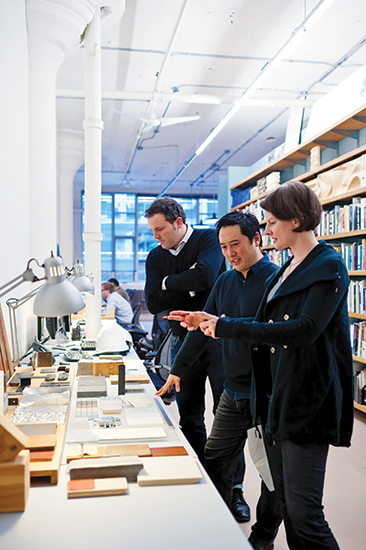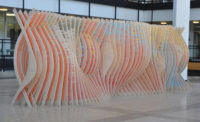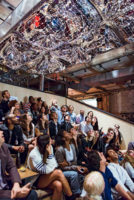As the partners of Toronto firm Williamson Chong tell it, they embarked on their practice quite literally in a canoe. Donald Chong, an Ontario native with his own firm, wanted to teach Shane and Betsy Williamson—an American couple with an architectural practice in Toronto—a thing or two about a classic Canadian pastime. Something clicked as the trio navigated the waterways of Algonquin Provincial Park and schlepped their gear over portages. Chong recalls thinking, “Hey, why don’t the three of us dovetail?” If this boot camp scenario was the proving ground for their relationship, then greater Toronto was the test tube for Williamson Chong’s combined interest in devising small-scale solutions to big-picture challenges like the condition of the city and the future of the archetypal family dwelling.

Before teaming up in 2011, the three architects often crossed paths in Toronto’s architectural community. Chong, who holds a B.Arch. from the University of Toronto, started his firm in 2004. Shane and Betsy Williamson, who both hold M.Arch. degrees from Harvard’s Graduate School of Design, began their firm in 2007 and moved to Canada after Shane took a position at the University of Toronto.
Each party had completed a significant residential project—one rural, one urban. The Williamsons had designed the award-winning House in Frogs Hollow, a muscular concrete structure carved into a landscape of rolling hills, with rich wood details inside and out. Meanwhile, in Toronto, Chong had completed the Galley House, a three story, 12-foot-wide residence on a narrow urban lot.
These projects set the tone for Williamson Chong’s work. In Toronto, they have continued to home in on the strategy explored in Galley House, an approach they term “incremental urbanism”—identifying the latent value in less desirable urban spaces. This tactic is evident in projects such as a 19-foot-wide residence called the Blantyre House (2011), composed of three narrow, stacked volumes, and, most recently, the Grange Triple Double house (2015), a multi-unit residence situated on a once-dilapidated corner in the city’s Chinatown.
Grange Triple Double is also representative of a burgeoning area of Williamson Chong’s practice—multi-generational housing. Here, the client, a professional couple, opted to build a shared house for their children as well as aging parents. The ground level holds a rental unit for tenants (which could later be converted to an apartment for their kids) while the upper floors contain the family’s living areas.
The architects are further investigating multigenerational living in their Ancaster Creek House (set for completion this April), an elegant modernist dwelling composed of two double-height volumes, linked by a central glazed dining area, for a couple and their elderly parents. The architects incorporated finely crafted details, like a gently twisting staircase, as well as universal design elements including generous entryways and living quarters on the ground level. “No one wants to feel like they are moving in with their parents, so it’s important to develop spaces that are discrete but connect on a family level,” says Betsy.
Increasingly, the firm is taking on other building types. “It’s risky not to be risky,” insists Chong. Alluding to Canada’s greatest sports hero, he paraphrases Wayne Gretzky: “You always want to go to where the puck will be.” Half of Williamson Chong’s work is currently a mix of commercial, cultural, and landscape projects. The firm has designed the master plan for a ski resort in southwestern Ontario and for both the production and retail facilities for Pilot Coffee Roasters.
A recent photo on the architects’ Facebook page, a bubbling mass of yeast, hints at what’s to come: a craft brewery in Niagara-on-the-Lake, Ontario, just opening now. The firm, with the three partners and five employees, has racked up awards, including the 2014 Royal Architectural Institute of Canada’s Emerging Architectural Practice Award, and an Architectural League of New York Emerging Voices honor that same year.
Williamson Chong continues to push their practice to find new design opportunities by exploring wood technologies and computational design and further developing innovative urban solutions. “Our architectural projects reflect the changing trajectories of cities,” notes Chong. “Toronto makes it easy for us, because people here are willing to try out new ways of living.”









Post a comment to this article
Report Abusive Comment